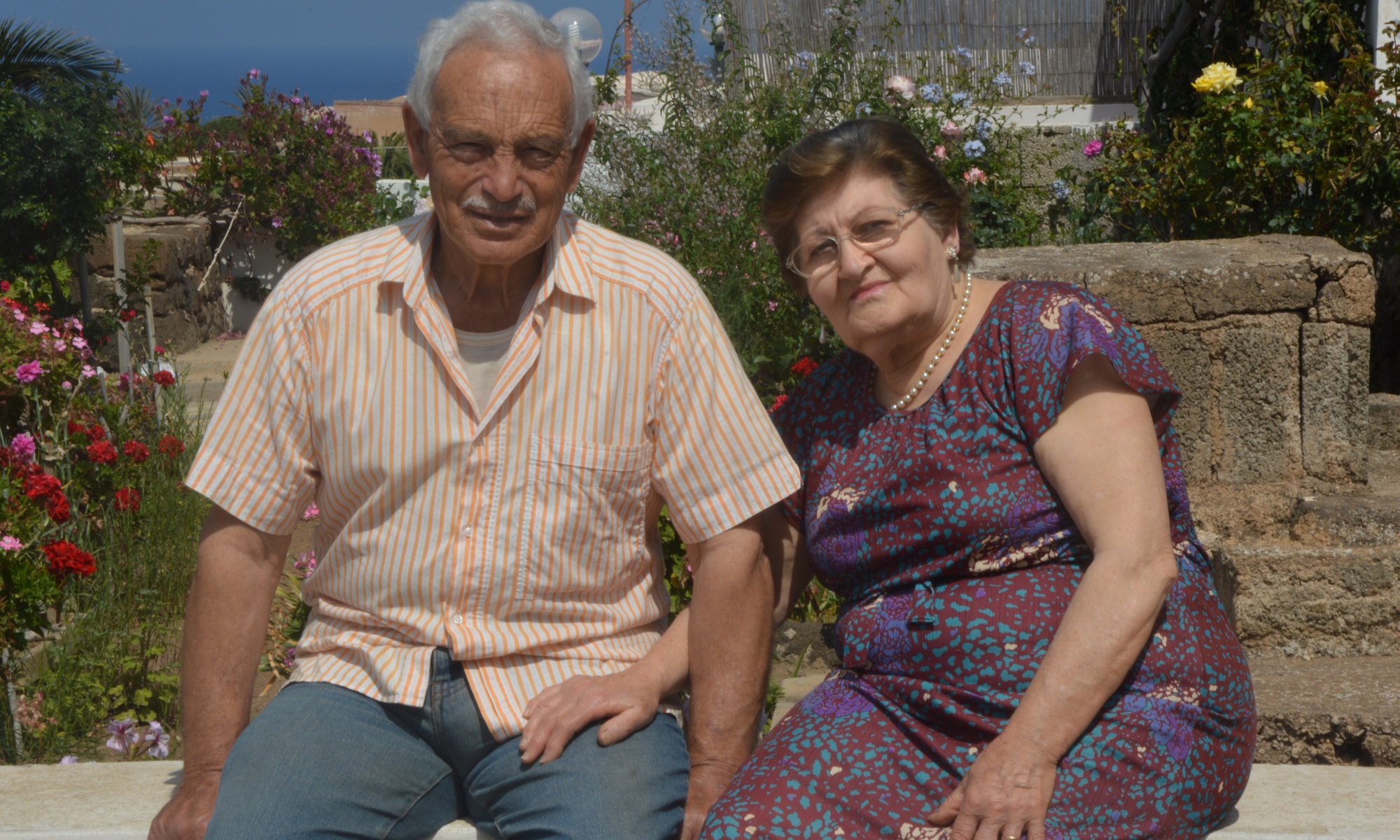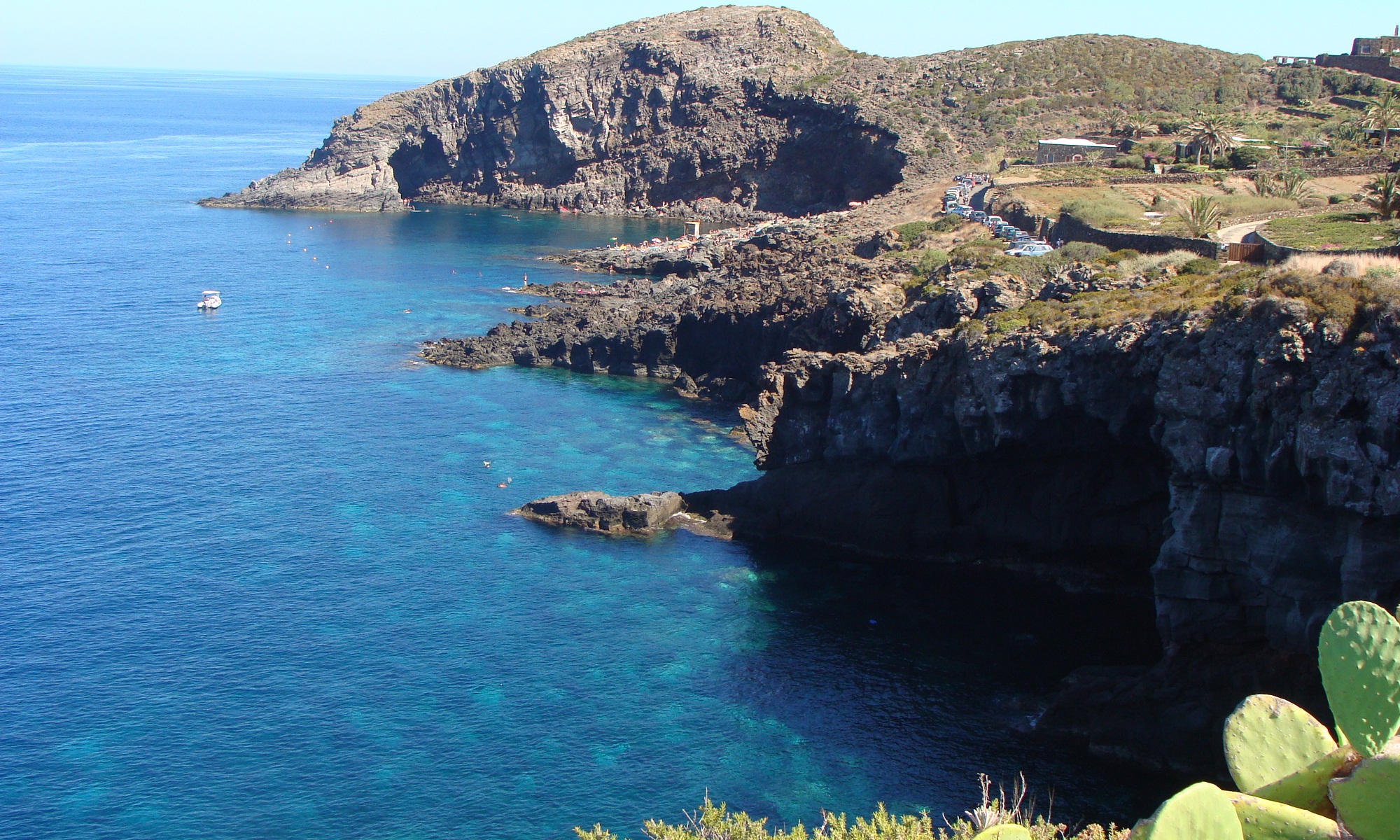PANTELLERIA
When describing Pantelleria, the largest Sicilian island, one can’t limit themselves to just a vacation spot, but rather a fantastic microcosm positioned in the center of the Mediterranean Sea.
In fact, here you won’t just have the usual three summer months for a relaxing vacation, but thanks to the sun’s constant presence and the natural beauty of the setting, the summers last much longer.
Pick any type of relaxing vacation here in Pantelleria, immersed in the nature and culture of a territory with ancient origins.
- DOWNLOAD THE “I CANNIZZI” BROCHURE
- DOWNLOAD A MAP OF PANTELLERIA ISLAND
- the coastline, characterized by sea lavender, sea fennel, crystalline ice plants, thymelaea, and sea fennel;
- the garrigue, rich with rosemary, wild lavender, rockrose, stockflowers, heath and strawflowers;
- the hillside, where pine trees, holm oak, heather, broom and strawberry-tree mingle amidst myrtle shrubs, ilatro, sarsaparilla and mastic;
- the plains, when moist, give birth to daisies, poppies, sorrel, narcissus and daffodils, viper grass and alyssum – when arid from lack of rain, isolation and wind, herbs and grasses roam free, such as wild millet, foxtail, thatching grass, and rope grass.
- the Volcanological Museum;
- the Montagna Grande National Protected Reserve: covered with woods and forests of holm oak and pine, with unique and rare botanical species. The only nature reserve in Europe with a natural habitat for two beautifully colored birds, the bluetit and the Algerian Zitting Cisticola;
- the Dietro L’Isola Natural Preserve : on the south side of Pantelleria Island, it is a pine forest (pines, Aleppo pines and oaks) that challenge the rock from cliff to sea, an explosion of aromatic scents.
SEA
Immersion in the crystal blue waters of the island is one of the great pleasures of life in Pantelleria, either between the volcanic cliffs or among the isolated cobblestone coves.
For those with a passion for marine life, Pantelleria offers fantastic diving trips to discover the coast and sea floor of the island.
There are different sea floors to visit around the island of Pantelleria.
There are many ways to visit the beach:
- Bue Marino, low, smooth bluffs, perfect for kids and non-swimmers;
- Karuscia, bluffs with easy access to the beach, recommended for children;
- Campobello, low, smooth coast that slopes down toward the sea;
- Khattibuale, a long stretch of coast with small, level coves angling towards the sea – it borders an area with a low jagged sea line, much less accessible;
- Punta Gattara, a coastline with easy access to the sea;
- Cala Cinque Denti, a beautiful bay with crystal blue waters that range from turquoise to emerald green;
- Laghetto delle Ondine, a gorgeous salt lake that feeds from the sea, reachable by boat or land;
- Cala Cottone, small rocky bay, reachable by a trail in the middle of the green, pristine woods;
- Cala Gadir, an ancient port city with its own marina overlooking the rocky coast with natural thermal pools at sea level;
- Punta Karace, low, smooth coastline with relatively easy accesso to the sea;
- Cala Tramontana e Cala Levante, the most popular swimming areas, both because of their natural beauty and easy access to the sea;
- Arco dell’Elefante and Faraglione di Punta Tracino, two of the most popular attractions on the island;
- Martingana e Cala Rotonda, high, jagged coastline recommended for diving;
- Punta Li Marsi, where you can find one of the four lighthouses of the island;
- Balata dei Turchi, one of the most level parts of the island but with the easiest beach access;
- Punta di Nica, where under the sea line, warm thermal water bubbles out, reaching up to 70°C;
- Scauri Scalo, rocky coast but with easy beach access, good even for kids;
- Grotta di Sataria, named for its thermal waters that flow into special pools;
- Punta di Suvaki e Mursia, level, smooth coasts with easy access to the beach even for kids.
- Gadir: small pools carved out of the rock with thermal springs, sweet but rich in mineral salts, perfect for curing arthrosis and rheumatisms, with a varying temperature that goes from 39° C to 50° C;
- Sateria: a cave facing the sea, with three pools of thermal water at a constant temperature of approximately 40° C;
- Scauri: small pools of thermal water at a constant temperature of approximately 40° C;
- Nicà: the thermal waters of Nicà bubble from the rocks, mixing with the sea water. Thermal water is hot, ranging from 85° to 100°C;
- Specchio di Venere: in this crystal clear lake the sulfuric thermal waters range from 40° to 50°C and are concentrated towards the south side of the lake. In dry seasons the surface of the lake dries up considerably, leaving algae deposits behind, creating a dark mud with a typical sulfuric scent, great for the skin;
- Benikulà: a natural cave divided into two parts (sauna and dry bath), with a cooler external temperature (the frigidarium) and another inside where hot vapor blows intermittently at roughly 38°C. Ideal for relaxing body and mind, curing rheumatic pain or for detoxifying.
- the prehistorical village of Mursia, a city known for its walls and funeral mounds called Sesi;
- the Punic-Roman sanctuary of the Lago di Venere;
- the Roman settlement of Scauri;
- the acropolis of San Marco, which, with its numerous ruins, extends two full hillsides, culminating in the Polveriera building;
- the Punic-Roman relics of the underwater archeological site of Cala Gadir;
- the Barbacane castle;
- the Punic cisterns of Mueggen;
- the Byzantine tombs at allo Scalo di Scauri and Gibbiuna;
- the Phoenician tombs at Monastero.
- “sciakisciuka”, made of potatoes, peppers and eggplants cooked together;
- “cipuddrata”, onions cut into strips, fried with a small amount of vinegar and usually served as a side dish with fried fish;
- flavorful Caponata in a sweet and sour sauce, stuffed Pantelleria zucchini;
- “pumadori sciutti”, huge sun-dried tomatoes, preserved in oil and served as an antipasto;
- “ravioli amari” stuffed with ricotta;
- ”ammogghiu” served as a pasta sauce or as a dressing for grilled fish;
- fish couscous;
- “pisci sciutti”, sun-dried fish filets with oregano from Pantelleria;
- “migroci”, reef crabs;
- “cannateddru”, “mustazzola”, “ravioli duci”, “pasticciotti” and “cassateddri” , typical desserts and pastries of the area.
If you decide to take a scenic, relaxing boat trip, navigating under the cliffs to the rocks, halfway immersed in the emerald waters of the coves, exploring nature, landscapes, creeks, beaches and other areas available only by boat, Pietro is at your service to give you more information and advice.
You can also take boat excursions all the way to the Tunisian coast (a passport is necessary for these trips).
SPORT
For those who love hiking, there is a network of trails and itineraries that cover the entire island, running through forests and lands cultivated with zibibbo grapes, capers and olive groves.
There are more than 500km of trails and small roads on the island, making it possible to create 11 sightseeing itineraries, enriching Pantelleria Island from a nature and landscape perspective.
There are many sports options available on the island: swimming, canoing, surfing, sailing, snorkeling, diving, mountain biking, horse riding, etc.
The island, which has a surface of 86 km and a 52 km perimeter, offers scooter and car rental for easy travels through the island’s small dirt roads, at the end of which you can find some of the most beautiful places on Pantelleria.
Pietro is at your service to give you more information and advice.
WELL BEING
If for you, vacation means relaxation, slowing down, recharging your body from the stress of everyday life, Pantelleria is one of the best places to visit – with its volcanic origins, it’s like an open air, natural spa.
There are several places on Pantelleria with natural springs and baths, either open air or in protected caves, which allow for year round treatments. Here are some places to visit:
ARCHEOLOGY
For those who love to discover ancient cultures, there are several interesting archeological monuments, testaments of an old civilization, spread throughout the island.
The most important archeological areas of Pantelleria, part of the Parco Archeologico di Pantelleria, are:
Up to a few years ago, Pantelleria island had exclusively maintained its archeological sites on land; recently though, thanks to researchers, institutions and sea buffs, it was found that Pantelleria had several archeological sites underwater, of great value both historically and culturally.
The most important underwater sites can be found at Cala Gadir, Cala Tramontana e Cala Levante.
FOOD AND WINE
Last but not least, the gastronomy of the island. The various populations that dominated the island over time influenced the traditional peasant traditions of sea and countryside:
Naturally, all this is accompanied by typical wines from Pantelleria, white and red, as well as raisin wine and muscat from Pantelleria.
The Pantelleria caper, as it is a flavorful ingredient, is used in many typical foods from the area.
Such a beautiful, varied coastline: jagged rocks, smooth stones and natural rock sculptures. Easy access to the beach paired with breathtaking cliffs, often hiding in their depths beautiful caves with crystal blue water.
“I Cannizzi” wishes you a happy stay in Pantelleria, a slow world, made of silences and lovely environments, where your eye catches the countryside, between rock walls, gardens lush with citrus trees, where the islanders cultivate zibibbo grapes, capers, olive groves, gardens and fruit orchards.
Heroic agriculture designed the landscape of Pantelleria: the fruits of a union between volcanic earth, as generous and fertile as it is proud, and of men who learned to adapt to such a difficult but opulent territory.
Pantelleria is a volcanic island, exulted in its nature by deeply colored contrasts. The red clay deposits in the earth is juxtaposed with the smoky gray of the “favare,” combined with the white that comes from the vapors of the thermal founts. The obsidian black gives way to the yellow of the wild broom flowers, the rich purple from the stock flower growing by the sea; the crystal blue of the sea with its untouched beauty gives a window down below to the spectacular ocean floor, full of fish (snapper, amberjack, octopi, seabream, etc).
The volcanic rock fights against the forest and dots the Mediterranean landscape, and, uniting with the work of man, creates rural stone architecture, dammusi, which integrate with the background and create a fulcrum around which life in Pantelleria orbits.
DAMMUSO
A dammuso is a dwelling made of rock, cubically constructed “by addition“ around the “stanza centrale” with a domed roof, for practical reasons: to allow a greater surface for exposure to the sun, with less humidity and cool temperatures inside during the summer, a perfect place to dry raisins, figs and tomatoes.
The main reason for the curved roof, however, is to funnel rain water into its “jisterna,” a cistern for the collection of water, always found in each dammuso.
The dammusi are separated from each other by a side wall, which covers its terrace as well, “u’passiature”, upon which stand “ddukkena”, seats crafted out of rock, the best place to enjoy the beautiful sunset over the water from your terrace.
ENVIRONMENT
There are several types of environments in Pantelleria:
In Pantelleria you can also visit:






